A model of emotional compression, Rita Dove’s poem from the 1980s “The House Slave” provides a vivid snapshot of a slave community’s rustlings ‘fo day (before daylight)—children bundled in aprons, meals of cornbread, water, and salt pork, the peaceful sleep of the plantation’s mistress, the Massa’s “dreams of asses, rum and slave-funk”—tells of a world long past. Despite stubborn myths of the “happy, thankful slave” that have permeated narratives of antebellum black subjectivity, violence was a constant of life. Dove’s protagonist ruminates about it in this harrowing excerpt:
I cannot fall asleep again. At the second horn,
the whip curls across the backs of the laggards—
sometimes my sister’s voice, unmistaken, among them.
“Oh! Pray,” she cries. “Oh! pray!” Those days
I lie on my cot, shivering in the early heat…
and as the fields unfold to whiteness,
and they spill like bees among the fat flowers,
I weep. It is not yet daylight.
Dove’s poem fits in with the work of contemporary artists such as Theaster Gates’ that speculates on the inner life of Dave the Potter (a slave who inscribed his pots with rhyming couplets), that shows how the worlds the slaves made remain vital sources of inspiration, speculation, and provocation.
The idea of “performance” has been widely viewed as a theoretical framing for activities as disparate as writing, dancing, harvesting, throwing a potters wheel, or even scholarship—any action in the world that demonstrates “agency” on behalf of the doer and which produces some effect in the real world. Without doubt, the social worlds and material culture created by slavery in this country constituted a powerful milieu for the development of all manner of cultural production across the board from literature to religion to politics and everything in between. From the writing of Harriet Beecher Stowe, to the shared aesthetics among white and black preachers during the Second Great Awakening, to works such as that of Hank Willis Thomas that use visual icons from slavery to raise various kinds of critiques—all testify to the ongoing influence of slave culture. Moreover, scholars such as Dena Epstein (Sinful Tunes and Spirituals: Black Folk Music to the Civil War), Lawrence Levine (Black Culture and Black Consciousness: Afro-American Folk Thought from Slavery to Freedom), and Roger Abrahams (Singing the Master: The Emergence of African American Culture in the Plantation South) provide copious documentation of a wide variety of expressive culture in which slaves made a world through aesthetic praxis.
 During the first sixty years of the nineteenth century, the United States continued its expansion across the continent, and slavery continued even though an 1808 Congressional Act officially ended the lawful importation of slaves. The demand for slaves in the interior South increased with the dramatically growing plantation economy, solidifying the interdependence of both institutions. Communities of both free and enslaved blacks, the numbers of which rose from three quarters of a million in 1790 to well over 4 million by 1860, continued their resistance to their status in American society. The formation of the Free People of Color, the courageous slave revolts, the establishments of black newspapers, and the growth of independent black churches affirm the presence of a vital black cultural agency.
During the first sixty years of the nineteenth century, the United States continued its expansion across the continent, and slavery continued even though an 1808 Congressional Act officially ended the lawful importation of slaves. The demand for slaves in the interior South increased with the dramatically growing plantation economy, solidifying the interdependence of both institutions. Communities of both free and enslaved blacks, the numbers of which rose from three quarters of a million in 1790 to well over 4 million by 1860, continued their resistance to their status in American society. The formation of the Free People of Color, the courageous slave revolts, the establishments of black newspapers, and the growth of independent black churches affirm the presence of a vital black cultural agency.
We should remember that the music culture that developed in the context of slavery did not constitute the sole realm of black “musicking” in the 19th century. The rapidly growing infrastructure of a distinctly American theater and concert culture in urban spaces provide other realms for black performance to influence society. Among free blacks in the North, black brass bands that played popular songs of the day could be found in Philadelphia, New York, and Boston as well as in the Midwest and in New Orleans. Some of the music performed by these groups was their own, and thus, a school of composition written for popular consumption emerged employing the styles, tastes, and conventions of their white counterparts. Nonprofessional black itinerant musicians and vendors also roamed public urban spaces peddling their wares with street cries and song fragments analogous to those heard in the fields of Southern plantations.
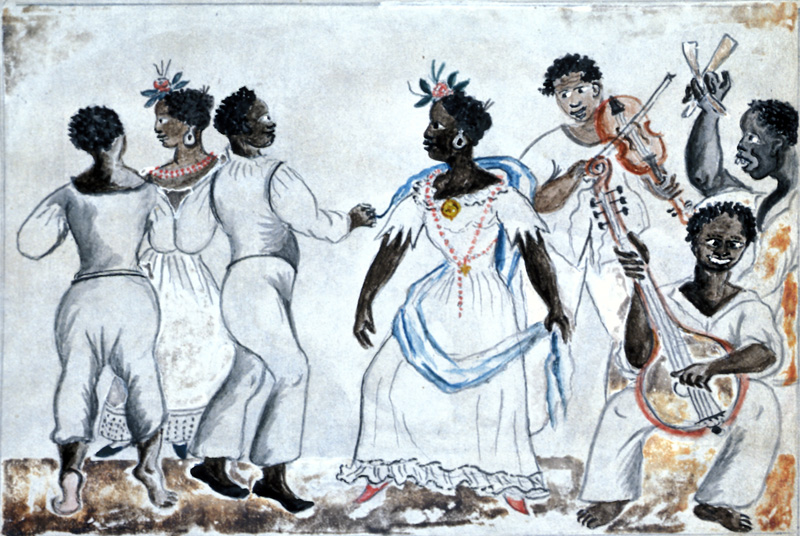 During the antebellum period, local customs and laws, black population patterns, and the distinct political histories of various regions determined the shape and geographic diversity of African American musical expression. Where free blacks were in the minority, such as they were in the North, a musician such as Francis Johnson (discussed below) could get training and compete in an integrated, though still unequal, environment. In some regions of the slave-holding South where blacks were subjected to more harsh and extreme control measures, Christianity strongly shaped the development of a distinctive system of black musical expression. Some areas restricted black music making by suppressing drumming at various historical moments.
During the antebellum period, local customs and laws, black population patterns, and the distinct political histories of various regions determined the shape and geographic diversity of African American musical expression. Where free blacks were in the minority, such as they were in the North, a musician such as Francis Johnson (discussed below) could get training and compete in an integrated, though still unequal, environment. In some regions of the slave-holding South where blacks were subjected to more harsh and extreme control measures, Christianity strongly shaped the development of a distinctive system of black musical expression. Some areas restricted black music making by suppressing drumming at various historical moments.
The African Grove Theater in New York City began as a private tea garden in 1816 and opened its doors to the public in 1821. In the face of constant hostility from the neighboring whites, the theater nonetheless remained open until around 1829, mounting productions that typically included overtures, ballad operas, ballets, and intermittent dances and “fashionable” songs or marches. In New Orleans, part of a larger region with strong French and Spanish cultural roots, a rich heritage of Creole of color, black, and white cultural mixing distinguished the city’s musical profile. The Marigny Theater, for example, opened in 1838 for Creoles of color to enjoy light comedies in French together with other kinds of variety shows that included music. New Orleans’ black musical life was among the most vibrant in the nation, boasting special seating for free blacks and slaves at opera houses, freelance instrumentalists, brass bands and orchestras, and the Negro Philharmonic Society, formed to during the 1830s to present concerts by local and visiting musicians.
Three Black Virtuosos: Frank Johnson, Black Patti, and Blind Tom
Francis Johnson, a Philadelphian, was central in establishing a black instrumental band tradition as a composer, virtuoso musician on the violin and keyed bugle, a bandleader, music instructor, entrepreneur, community organizer, a master music promoter, and the first African American to have his musical works published. He was among the first American musicians to take a band to Europe. There, he witnessed a unique variety format called “promenade concerts” and brought it back to Philadelphia to great acclaim. Johnson received music instruction from a white teacher who thoroughly grounded him in music theory, composition, and performance. He formed his ensemble between the years 1819 and 1821, playing for many occasions among Philadelphia’s white elites. He traveled with equally talented black musicians whose performance practices surely set them apart because of their ability to “distort” the notes on written page into a dynamic style that was drawn from musical traits from black culture. This propensity, perhaps, gave them the reputation as “a rough set of Negroes” by contemporary observers. The overwhelming popularity of Johnson’s contribution to the various traditions of American band music in his time foreshadowed that of John Philip Sousa, another towering giant in this realm.
 The years after the Civil War saw the rise and popularity of many black women on the concert stage singing European art music. One was the concert singer Sissieretta Joyner Jones (c1868-1933)–popularly known as Black Patti, a woman who built an amazing career touring and astounding audiences here and abroad. Trained first by her mother and then in formal lessons Jones’ performances were overwhelming well received in the press, such as in this notice: “Miss Jones possesses natural gifts which have been carefully trained. This alone would secure here success. And she possesses as well that which no schooling can give, musical understanding and warm feeling. The colored artist sings with absolute purity and perfect correctness, her high notes are of fine power, the deeper tones rich and full, and her management of rapid passages remarkable.” In Germany, one reviewer was obviously obsessed with the specifics of her racial background: “Miss Jones is evidently of Negro blood, but not alone of Negro blood. She is a mulatto of bronzed complexion and pleasant expressive features, with full lips and high forehead and the bearing of a lady, even to the choice of her costume.” Her standard repertoire included opera arias, ballads and sentimental American songs. Later in life she formed her own company and made the transition from the concert stage to the minstrelsy circuit circuit as “black prima donnas” fell out of vogue around the turn of the century. In particular, Jones’ exceptional career was stifled because she never learned an entire opera role and therefore could not sustain public interest in her only singing selected arias. And there were others. Touring widely in the United States and Europe, soprano Marie Selika Williams and the Hyers Sisters, among others, maintained active careers with good management and engagements in prestigious concert halls. One cannot ignore the fact that because minstrelsy was such a ubiquitous and lucrative platform, many black performers had no choice but to present their work in this highly appealing theatrical format.
The years after the Civil War saw the rise and popularity of many black women on the concert stage singing European art music. One was the concert singer Sissieretta Joyner Jones (c1868-1933)–popularly known as Black Patti, a woman who built an amazing career touring and astounding audiences here and abroad. Trained first by her mother and then in formal lessons Jones’ performances were overwhelming well received in the press, such as in this notice: “Miss Jones possesses natural gifts which have been carefully trained. This alone would secure here success. And she possesses as well that which no schooling can give, musical understanding and warm feeling. The colored artist sings with absolute purity and perfect correctness, her high notes are of fine power, the deeper tones rich and full, and her management of rapid passages remarkable.” In Germany, one reviewer was obviously obsessed with the specifics of her racial background: “Miss Jones is evidently of Negro blood, but not alone of Negro blood. She is a mulatto of bronzed complexion and pleasant expressive features, with full lips and high forehead and the bearing of a lady, even to the choice of her costume.” Her standard repertoire included opera arias, ballads and sentimental American songs. Later in life she formed her own company and made the transition from the concert stage to the minstrelsy circuit circuit as “black prima donnas” fell out of vogue around the turn of the century. In particular, Jones’ exceptional career was stifled because she never learned an entire opera role and therefore could not sustain public interest in her only singing selected arias. And there were others. Touring widely in the United States and Europe, soprano Marie Selika Williams and the Hyers Sisters, among others, maintained active careers with good management and engagements in prestigious concert halls. One cannot ignore the fact that because minstrelsy was such a ubiquitous and lucrative platform, many black performers had no choice but to present their work in this highly appealing theatrical format.
Black male instrumentalists achieved significant popularity during this time. Born a slave, the unsighted pianist and composer Thomas Green Bethune (1849-1909), known as “Blind Tom,” received musical training from his masters, learning thousands of works of the classical repertory by ear. Routinely subjected to tests of his powers of extraordinary musical memory, Bethune toured the Europe, the United States, and South America for thirty years under the aegis of his owners who continued to manage his career even after slavery ended. Bethune wrote over 100 compositions, and as his biographer Geneva Southall has indicated, they were mostly fantasias based on operatic arias and popular ballads of the day. This certainly draws comparisons between his work and that of Black Patti, both of whom seemed to live by the mantra “got to give the people what they want.” Bethune also included in his programs Bach preludes and fugues. A signature element of some of his compositions included special effects that mimicked the natural world, such as in his use of tremolos to depict thunder. As Southall argues, as so much of his coverage in the press attempted to sensationalize how “unusual” he was, many people did not or could conceive of his accomplishments as that of a serious pianist and composer. For many, he was always reduced to a sideshow. Bethune was also part of a larger trend during this historical moment in which there were other black male pianists, organists, and violinists trained as concert artists and who broke new ground first by obtaining formal training in conservatories and then by building reputations in the art world.
In their new book, Darkest America: Black Minstrelsy from Slavery to Hip-Hop, Yuval Taylor and Jake Austen begin by showing the lingering legacy of blackface minstrelsy in contemporary American culture, describing it as “a hell of a drug.” Using a skit from the Dave Chappelle show to demonstrate this, the authors point out how controversial minstrelsy’s hold over American entertainment is even today.
Although many of us know enough to be a little uncomfortable with its stubborn presence in the media, few can say exactly what it is. Blackface minstrelsy emerged as a complex set of performance genres—songs, sketches, dances, novelty acts—whose conventions and functions changed over time and whose influence remained intact for many years. At the peak of its popularity between 1850-1870, it featured white men in blackface executing caricatures of expressive practices observed among slaves, black street vendors and roving musicians in cities. Minstrelsy’s sensational stereotypes and popularity became a paradigm with which black performers would have to publicly contend well into the twentieth century. Understood as a uniquely American form of entertainment at a time when the country’s cultural elite still looked to European performers, repertoire, and practice as the measure of “good” music, 19th century periodicals ran articles that disparaged minstrelsy’s popularity among the masses.
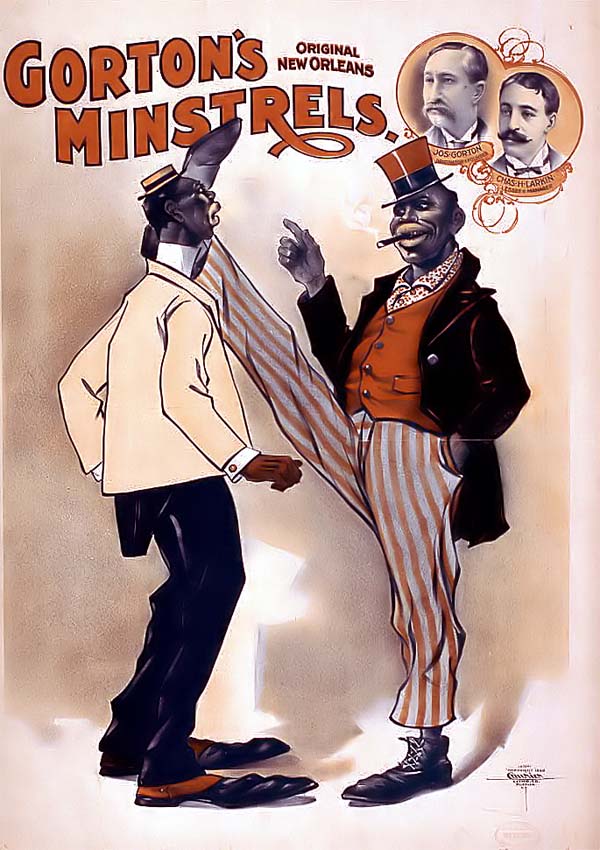 Important to black music history is the fact that contemporaneous audiences collapsed minstrelsy with musical styles developed by African Americans themselves, including concert spirituals or any other public performance of “blackness.” Popular minstrel songs like Thomas Rice’s “Jump, Jim Crow” became popular throughout the country among whites and blacks, particularly, as scholar Dale Cockrell points out, among urban dwellers far removed from the plantation or the western edges of American expansion depicted in the song’s many verses.
Important to black music history is the fact that contemporaneous audiences collapsed minstrelsy with musical styles developed by African Americans themselves, including concert spirituals or any other public performance of “blackness.” Popular minstrel songs like Thomas Rice’s “Jump, Jim Crow” became popular throughout the country among whites and blacks, particularly, as scholar Dale Cockrell points out, among urban dwellers far removed from the plantation or the western edges of American expansion depicted in the song’s many verses. 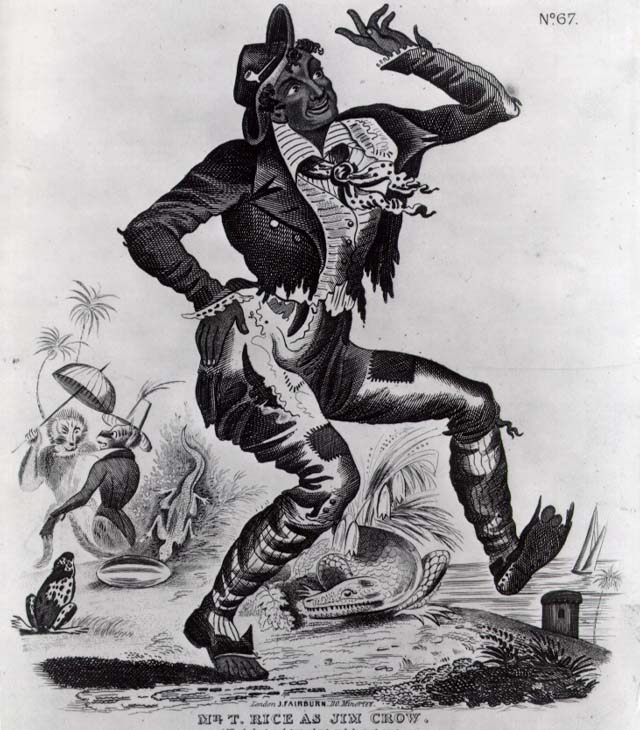 Minstrelsy set the tone for “black” performance as a “guilty pleasure,” an act of transgression against established social mores for an expanding white middle class with anxiety about upper mobility and distinguishing themselves from those lower on the social ladder. And when black performers themselves began to “blacken up” and perform, they helped to calcify minstrelsy as a performance mode of black “comedic theatricality” from the early 20th century stage shows, to celebrity comedians on the Apollo Theater stage in the 1930s and 1940s, and even to contemporary Tyler Perry films and television shows. As Spike Lee’s film Bamboozled proved, minstrelsy is a conundrum about which there is still many heated opinions and unfinished business well into the 21st century.
Minstrelsy set the tone for “black” performance as a “guilty pleasure,” an act of transgression against established social mores for an expanding white middle class with anxiety about upper mobility and distinguishing themselves from those lower on the social ladder. And when black performers themselves began to “blacken up” and perform, they helped to calcify minstrelsy as a performance mode of black “comedic theatricality” from the early 20th century stage shows, to celebrity comedians on the Apollo Theater stage in the 1930s and 1940s, and even to contemporary Tyler Perry films and television shows. As Spike Lee’s film Bamboozled proved, minstrelsy is a conundrum about which there is still many heated opinions and unfinished business well into the 21st century.
Below are Bruce Springteen’s rendition of the song “Old Dan Tucker” and a performance of “Camptown Races,” two minstrelsy-era songs still performed today without the direct connection to their origins.
Old Dan Tucker
Camptown Races
The dramatic move from slavery to freedom over the course of the 19th century saw many spheres of spectacular performances of blackness rise and fall, some vanishing from the public sphere and some refashioning themselves for contemporaneous consumption and delight. Whether it was an opera aria issuing forth from virtuoso black lips or a song and dance depending on the most negative stereotypes about black people for its logic, the spectacle of performed blackness solidified as a particularly dynamic site of social meaning in America.
Tags: African Grove Theater, Black Patti, Blind Tom Bethune, Darkest America, Dave Chapelle, Dave the Potter, Dena Epstein, Frank Johnson, Hank Willis Thomas, Harriet Beecher Stowe, Jake Austen, Jim Crow, Jump, Lawrence Levine, Rita Dove, Roger Abraham., Sissieretta Jones, The House Slave, Theaster Gates, Tom Rice, Yuval Taylor

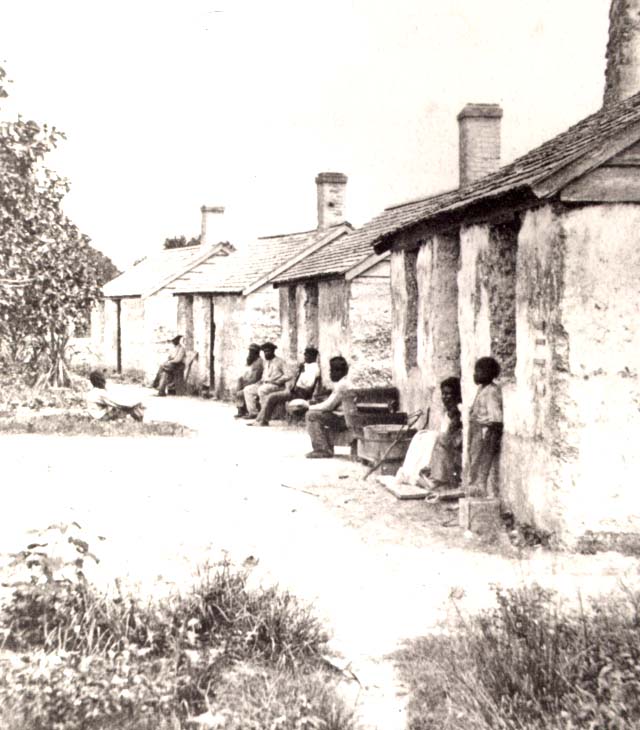
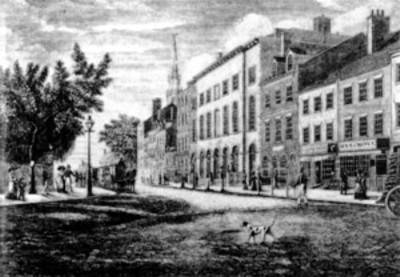
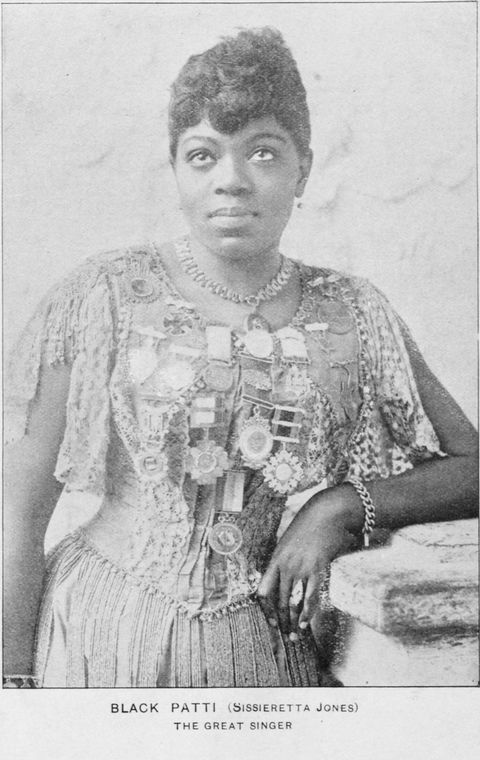
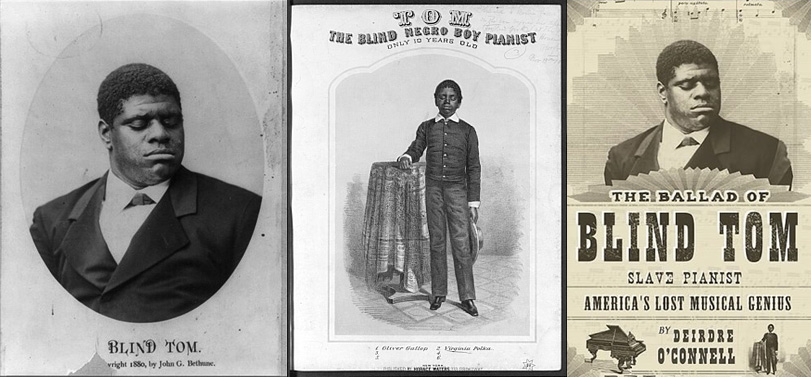
 Share On Facebook
Share On Facebook Tweet It
Tweet It




